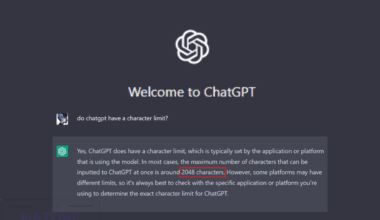AI Duet Piano is a musical innovation developed by Google’s Creative Lab unit.
It functions as a piano-playing bot powered by artificial intelligence.
In this article, we will discuss the AI duet piano, its features, its limitations, and how to use it.
Table of Contents Show
What Is AI Duet Piano?
AI Duet Piano is a unique piano-playing bot that uses artificial intelligence to create its own melodies.
This enables it to understand and respond to user keystrokes.
Correspondingly, this interactive tool allows users to play piano keys, prompting the AI to create complementary music.
Moreover, beyond a mere digital piano, it fosters a collaborative musical experience where users engage in a duet with the AI.
Utilizing a keyboard, computer keys, or a MIDI keyboard, it has educational applications in music and computing.
Furthermore, it is a platform to introduce pupils to machine learning and neural networks.
Features Of AI Duet Piano
The features of AI Duet Piano include:
- Artificial Intelligence Melody Creation: AI Duet employs artificial intelligence to generate its own melodies based on user inputs autonomously.
- Developed with Google’s Creative Lab: It benefits from Google’s expertise in innovation and technology.
- Magenta Project Integration: It contributes to exploring whether machines can create captivating art and music.
- Neural Network Algorithm: AI Duet Piano’s algorithm utilizes a neural network to understand user keystrokes and craft musical responses.
- Interactive Duet Experience: Users can engage in a duet with the AI by inputting notes on the keyboard. This prompts the AI to respond with complementary music.
- Realistic Responses: The AI responds with music closely matching the notation and tone of the user’s playing. This results in a remarkably similar sound.
- Short Musical Intervals: The AI’s responses occur in short intervals, maintaining a musical dialogue with the user’s inputs.
- Music Creation Experimentation: It offers a playful way for users to experiment with music creation. This explores the fusion of human creativity and AI capabilities.
- Enhancing Creativity: The tool demonstrates how AI can complement human creativity in music. It showcases its potential to enhance the creative process.
- Accessible Interface: Users can interact with it easily by typing in notes on the keyboard. This makes it accessible for individuals with varying levels of musical expertise.
How To Use AI Duet Piano?
To use AI Duet Piano, follow these steps:
- Visit the Official Website: Go to the official AI Duet website where the tool is available.
- Play the Keys: Begin playing the piano keys on your computer’s keyboard or another input method.

- Listen to AI Response: As you play, listen to the AI’s response as it harmonizes with your inputs, creating a musical duet.
- Explore Variations: Experiment with different melodies, rhythms, and patterns to observe how the AI adjusts and complements your musical choices.
Limitations Of AI Duet Piano
This is an amazing application that lets you play a piano keyboard with an AI that responds to your input.
It is powered by Google’s Magenta project and a neural network.
However, like any other program, it has some limitations.
The limitations of AI Duet Piano include the following:
- The AI might operate within a predefined range of possibilities, constraining its responses. This limits the diversity and creativity of the musical output.
- The optimal functionality of this AI relies on a stable internet connection. It potentially impedes its use in areas with unreliable connectivity.
- It focuses solely on piano sounds and lacks the ability to replicate a broader array of musical instruments or timbres.
- The AI’s ability to generate music might be restricted to the styles and patterns it has been trained on.
- Adapting to sudden shifts or unexpected musical inputs from the user in real time might pose challenges for the AI.
The Bottom Line
It offers an innovative and interactive way for users to collaborate with artificial intelligence in creating harmonious melodies.
Moreover, it highlights AI’s music potential and encourages creativity, exploration, and understanding of tech-music dynamics.


